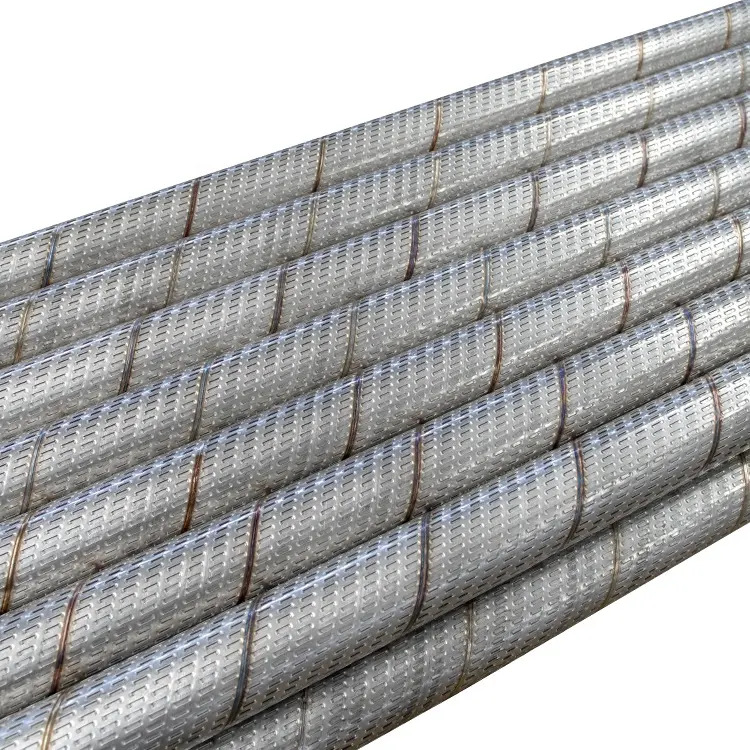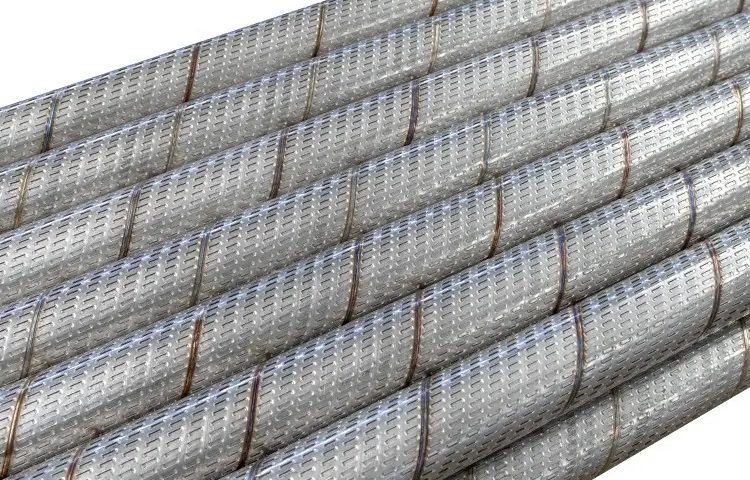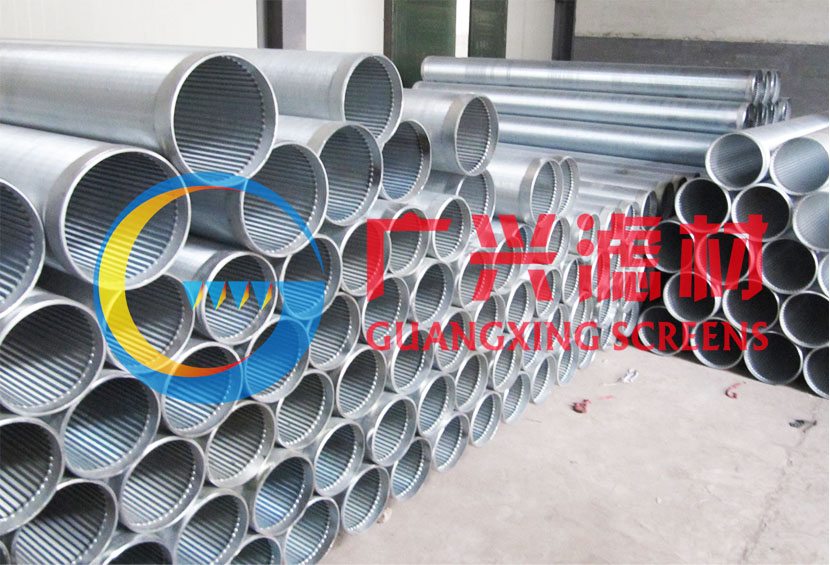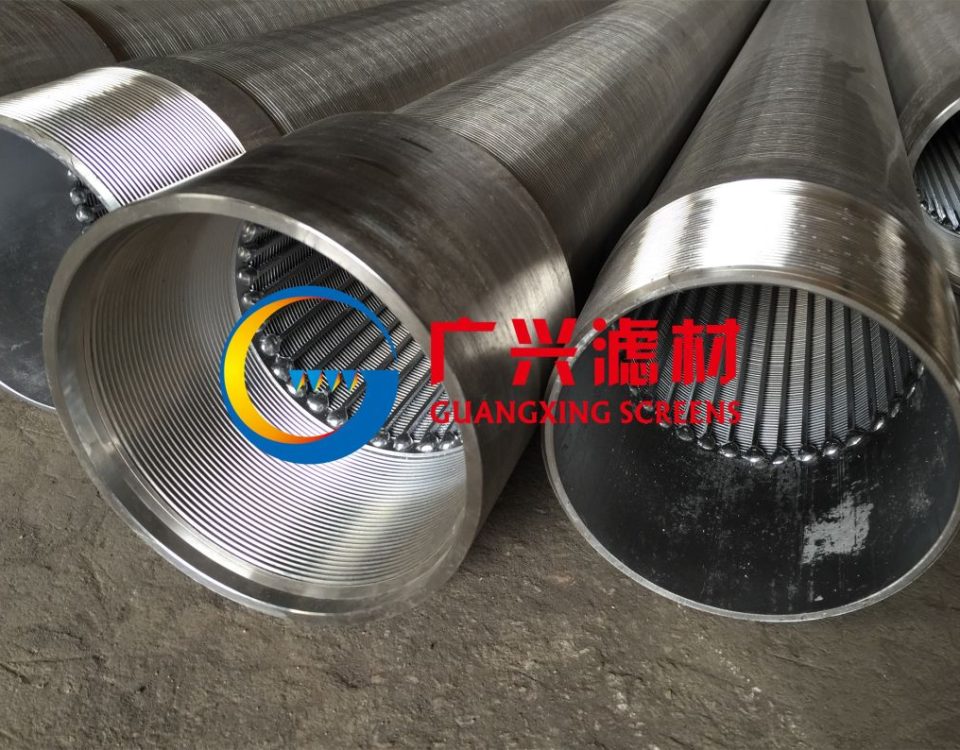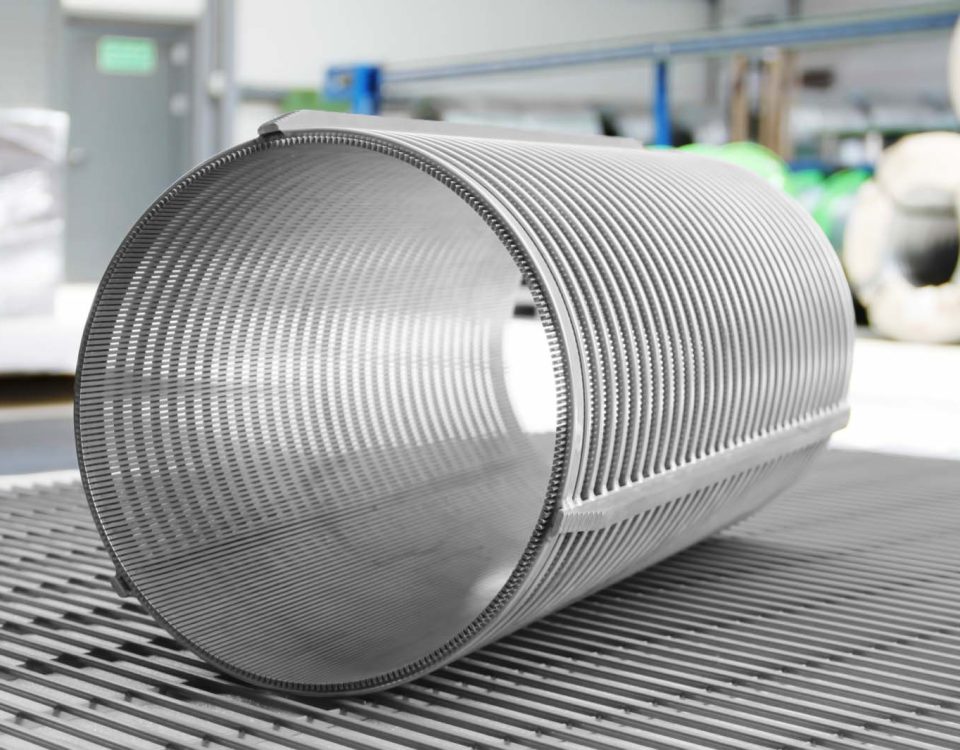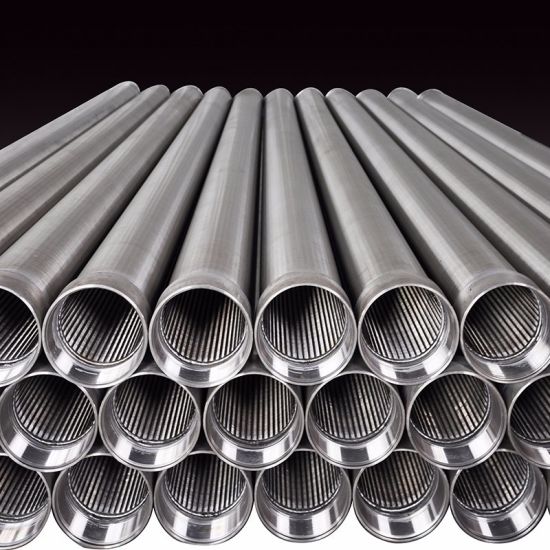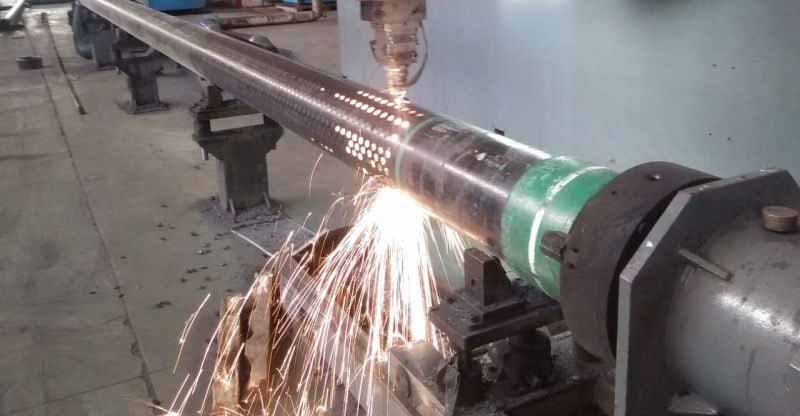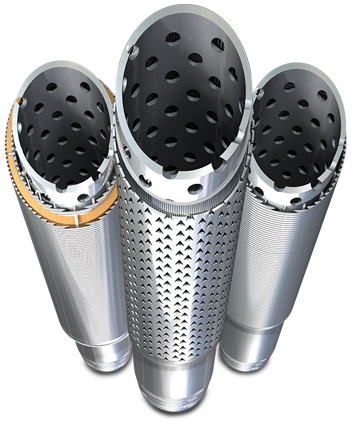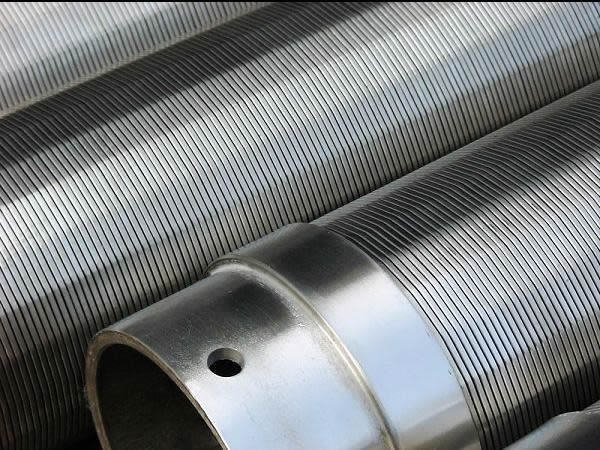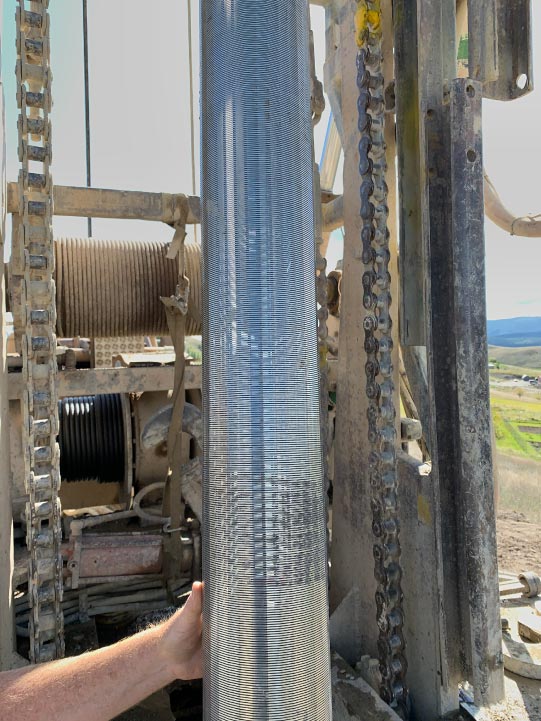
Come funzionano gli schermi e gli involucri dei pozzi in acciaio inossidabile ?
Maggio 19, 2023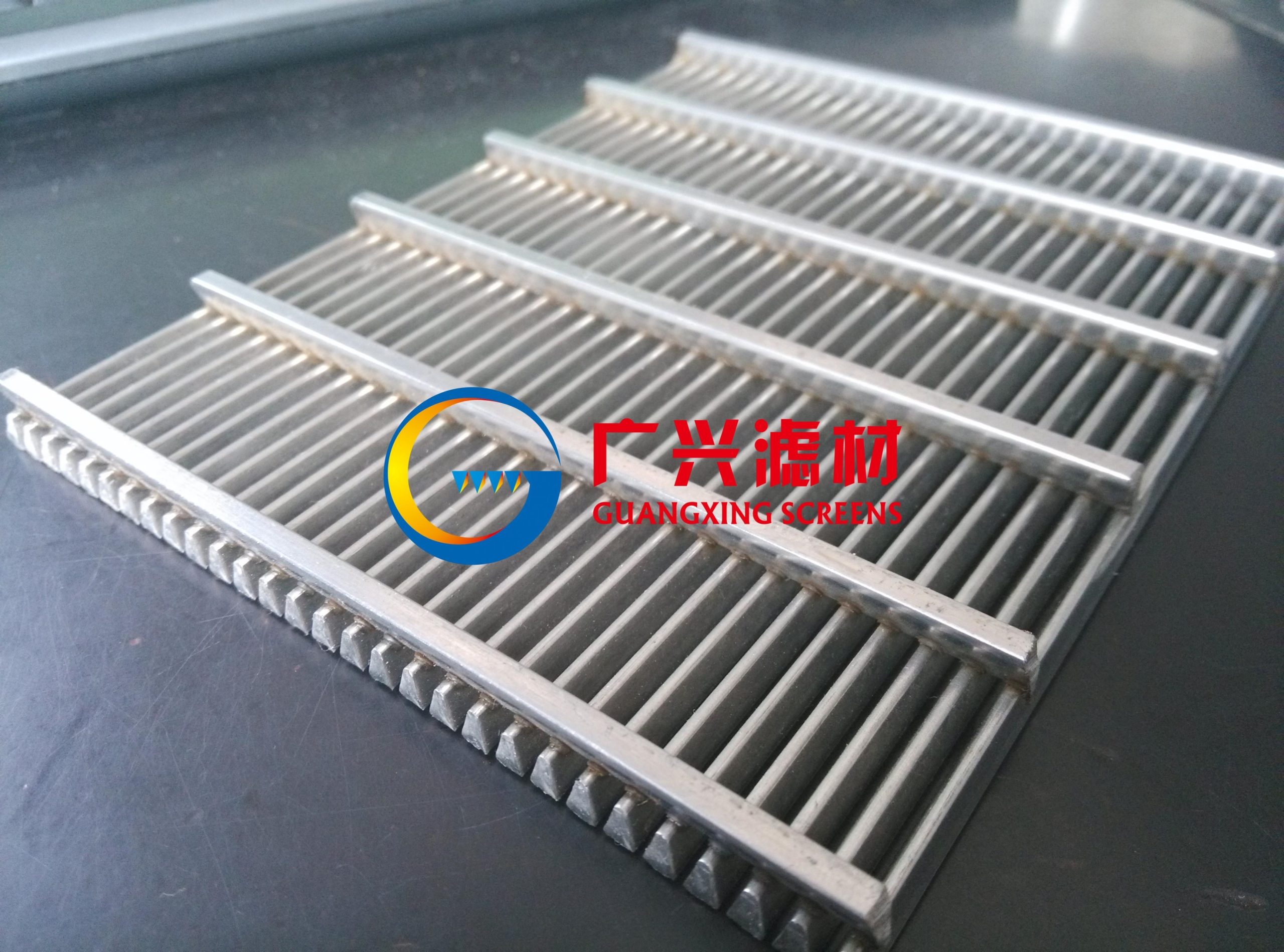
Schermatura a cuneo utilizzata per il separatore dello schermo ad anello
Giugno 19, 2023Mulino Schermo a pozzo scanalato
Un altro schermo con fessure verticali è prodotto dall'involucro mediante fresatura di aperture con frese orientate assialmente. Questo prodotto è
progettato per l'uso nei pozzi petroliferi dove la produzione di fluido è molto bassa. I suoi svantaggi includono l'intasamento dovuto alle superfici parallele
all'interno dell'apertura. Poiché l'intasamento delle fessure è direttamente correlato allo spessore della parete, il materiale più spesso favorisce un maggiore ostruzione. Alcuni involucri scanalati di laminatoi verticali sono lavorati con un sottosquadro per ridurre questa tendenza. Un secondo inconveniente è la bassa area di apertura, sebbene questo possa essere superato a costi più elevati aumentando il numero di slot. Resistenza al collasso di involucri fessurati verticalmente, però, si riduce sostanzialmente quando si aumenta il numero di aperture
L'esperienza sul campo ha dimostrato che lo sviluppo è generalmente più lento nei pozzi schermati con involucri a fessura fresati. Un altro aspetto delle fessure verticali rispetto alle aperture orizzontali è che il controllo della sabbia e della ghiaia è meno positivo. Nel frattempo, un'apertura più piccola e/o una gravità più grande, l'incisione laser può eseguire tagli molto piccoli con superficie liscia e alta precisione. Sebbene la sua struttura sia semplice, è molto efficace. Presenta piccoli tagli di 0,1-0,5 mm nella parete del tubo.
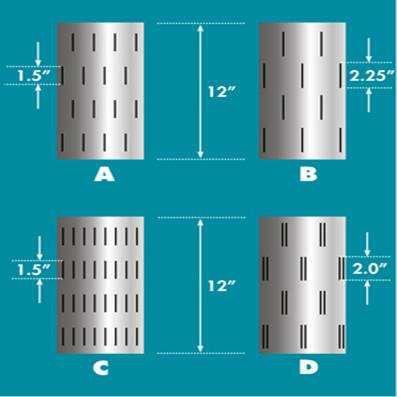
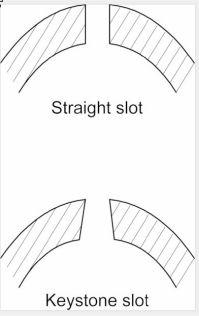
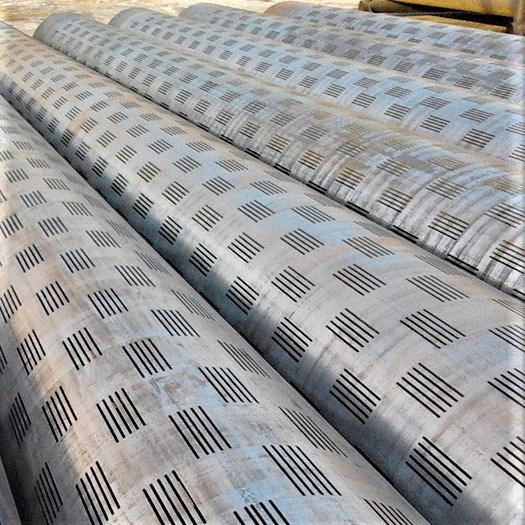
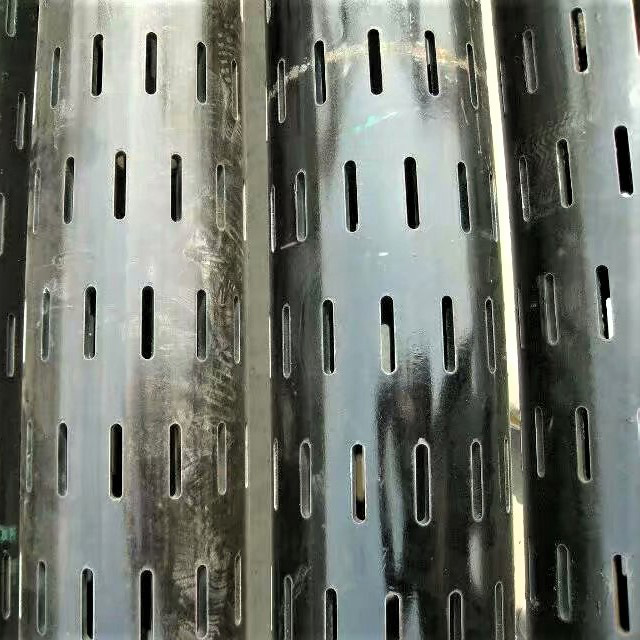
| API Involucro | diametro mm | Lunghezza m | Lunghezza fessura mm | N. slot N./m | Larghezza fessura mm | Tolleranza scanalatura | Area filtro valida cm/m | Max. Forza KN | ||
| Specifiche mm | Spessore mm | Per peso kg/m | ||||||||
| 60.32 | 5 | 6.84 | 50.3 | 3 | 80 | 200 | 0.3 | ± 50 | 48 | 512.54 |
| 73.02 | 5.5 | 9.15 | 62 | 240 | 57.6 | 688.55 | ||||
| 88.9 | 6.5 | 13.22 | 75.9 | 280 | 67.2 | 995.1 | ||||
| 101.6 | 6.5 | 15.22 | 88.6 | 300 | 72 | 1151.2 | ||||
| 114.3 | 7 | 18.47 | 100.3 | 10 | 320 | 76.8 | 1400.4 | |||
| 127 | 7.52 | 22.13 | 112 | 340 | 81.6 | 1673.8 | ||||
| 139.7 | 7.72 | 25.11 | 124.3 | 360 | 86.4 | 1900.2 | ||||
| 9.17 | 29.48 | 121.4 | 360 | 86.4 | 2232.4 | |||||
| 168.3 | 8.94 | 35.09 | 150.4 | 400 | 96 | 2672.95 | ||||
| 177.8 | 8.05 | 33.68 | 161.7 | 440 | 105.6 | 2559.2 | ||||
| 9.19 | 38.19 | 159.4 | 440 | 105.6 | 2940.7 | |||||
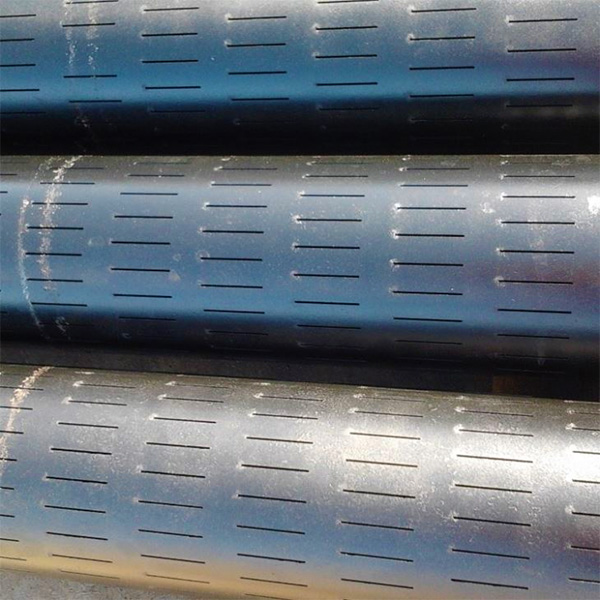
Avvolgi schermo & Schermo pozzetto Bridge Slot
Schermatura del pozzetto Wire Wrap
Uno schermo ben noto per pozzi viene prodotto avvolgendo un filo attorno ad aste longitudinali. Il filo viene saldato alle aste mediante saldatura a resistenza producendo una configurazione cilindrica a forma di gabbia. Questo tipo di schermo, comunemente noto come wire-wrap o fessura continua, è solitamente prodotto dal tipo 304 in acciaio inox, acciaio zincato e acciaio al carbonio.
Il design delle fessure continue è nato nella prima parte di questo secolo per superare i problemi di sviluppo delle acque sotterranee da falde acquifere tipiche associate agli Stati Uniti centro-settentrionali. Queste falde acquifere sono state generate da rocce raccolte, rotto, e polverizzato dall'avanzamento dei ghiacciai durante l'era glaciale. Mentre la lavorazione glaciale non è ben ordinata, occasionalmente sottili strati di grana fine, sabbie uniformi furono lavate dai depositi originari. Tali materiali sono formazioni che producono acqua ad alto rendimento. Prima dell'avvento della costruzione di pozzi rotanti e della progettazione di pozzi con involucro di ghiaia, era difficile produrre la piena capacità di acqua priva di sabbia da queste falde acquifere.
|
Materiale
|
SS304, SS304L, SS316, SS316L, SS321, Duplex, Hastelloy, ecc
|
|||
|
Diametro esterno
|
25–300mm
|
|||
|
Standard
|
Non standard, OEM, ODM
|
|||
|
Specifica:
|
Perdita facile, resistenza all'usura, resistenza alla corrosione. La sezione trasversale della mesh è un trapezio, larghezza ridotta dello spazio vuoto, avere un filo
realizzato in acciaio inossidabile laminato a freddo, questo filo è un'asta di supporto. Lo schermo è uniforme, la saldatura è stabile, tasso di fori elevato, lungo vita utile, molta forza, rigidità e capacità portante del rigido, il dispositivo di filtro schermante può essere realizzato in varie forme. |
|||
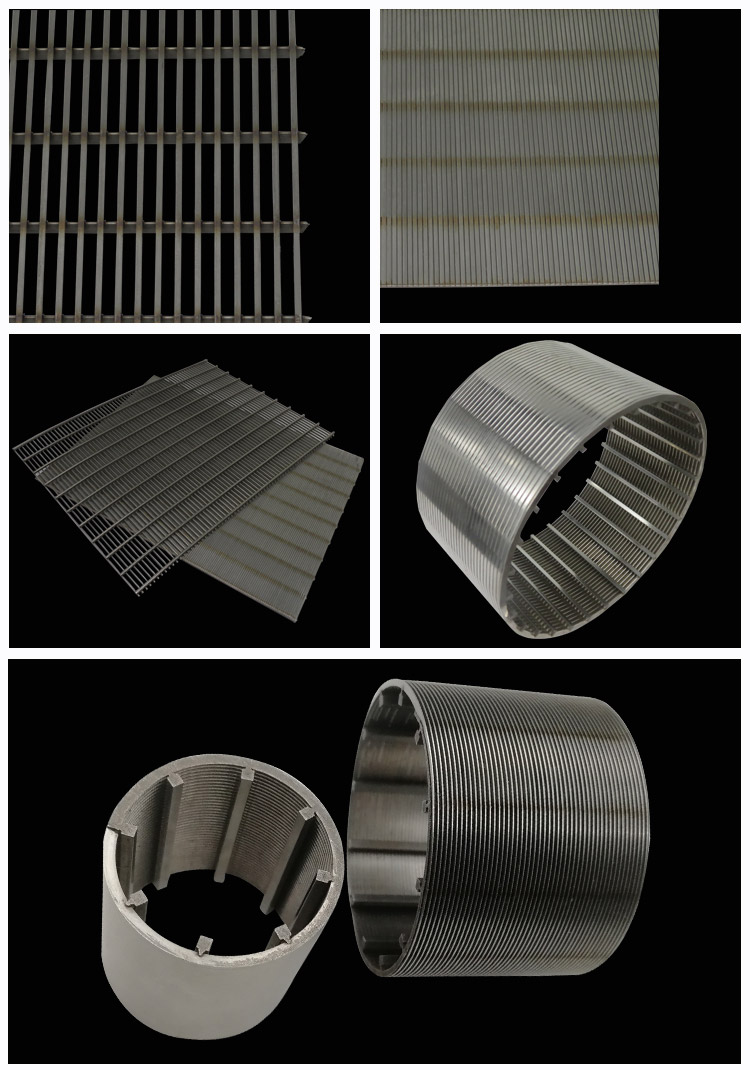
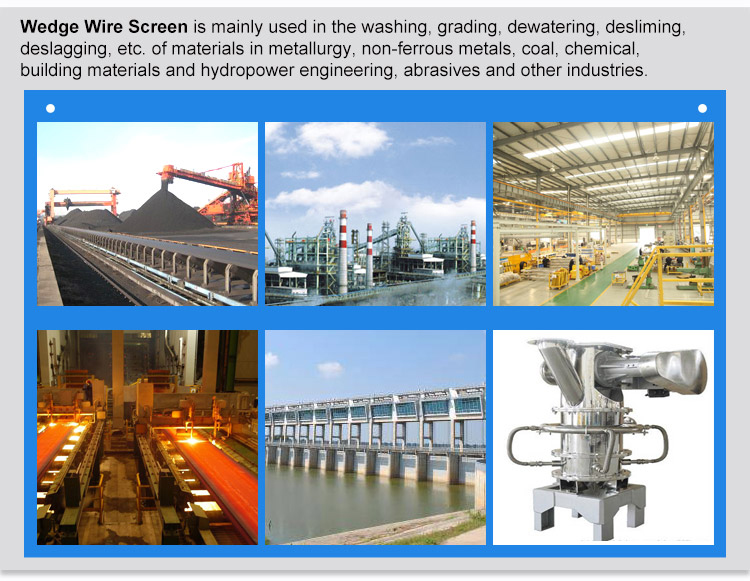
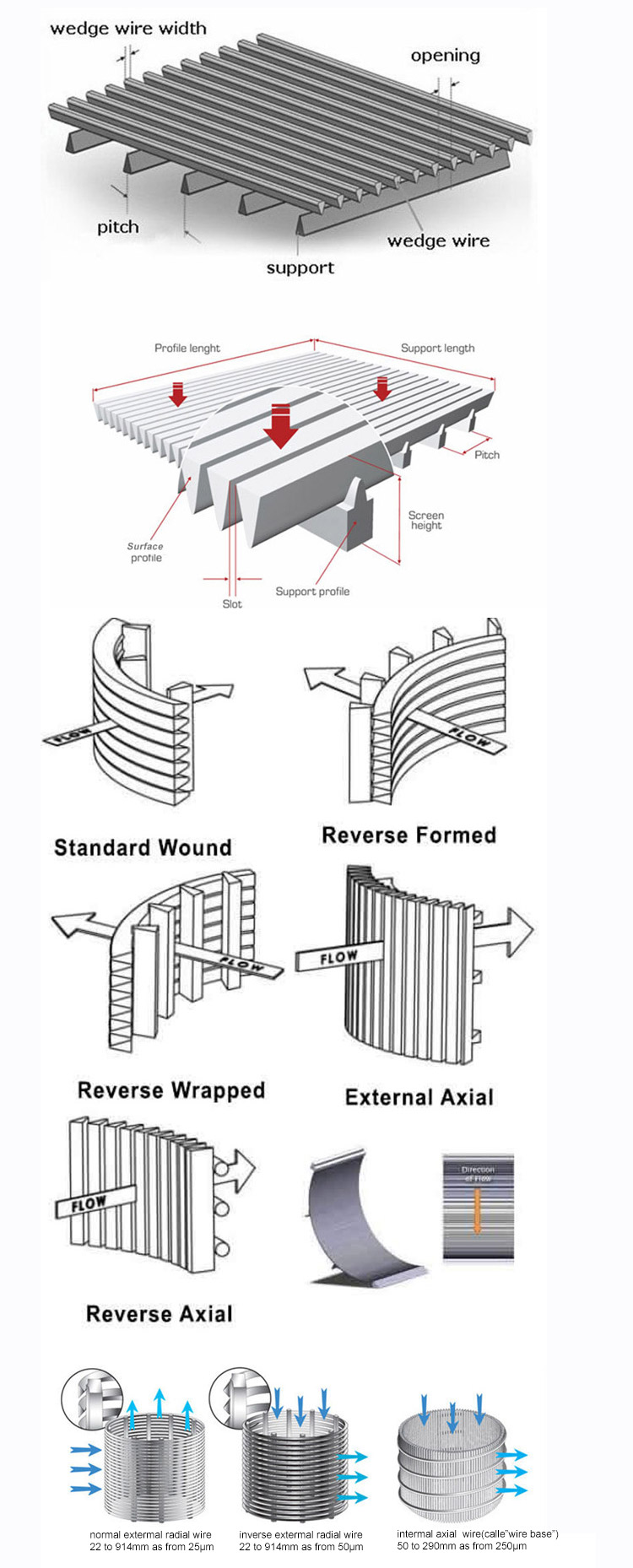
Per soddisfare queste condizioni è stato sviluppato un design del pozzetto che incorpora uno schermo wire-wrap, e si è rivelato vincente. Le caratteristiche dello schermo wire-wrap sono adatte al suo scopo originale. Questo design offre la più alta superficie di apertura di qualsiasi schermo. Di conseguenza, con apertura molto piccola (.005 in. A .035 a.) necessario per controllare le sabbie fini provenienti da falde acquifere sottili prive di involucro ghiaioso, sia ancora disponibile un'area di apertura sufficiente per ridurre al minimo le perdite di carico per attrito attraverso lo schermo. Tuttavia, in tali circostanze, è necessario utilizzare acciaio inossidabile poiché l'ampliamento delle aperture comporta il pompaggio della sabbia.
Il processo di produzione si presta alle tolleranze strette richieste per aperture di dimensioni molto ridotte e la configurazione della fessura a V riduce l'intasamento. È necessario prestare particolare attenzione all'uso dello schermo wire-wrap in situazioni o condizioni per le quali non è stato originariamente progettato. Generalmente è più costoso di altri tipi senza necessariamente fornire una produzione maggiore, migliore efficienza o maggiore durata. Schermo di questo disegno, compreso il costo più elevato, versioni pesanti con steli più grandi, filo o entrambi, ha una resistenza al collasso inferiore rispetto ad altri tipi di schermi e solitamente inferiore all'involucro del pozzo con cui è installato. Particolare attenzione deve essere prestata durante l'installazione. La configurazione dello schermo avvolto in filo rende difficile il tampone, un metodo semplice e molto efficace per lo sviluppo del pozzo, riqualificazione e pulizia. Questo perché la superficie interna dello schermo non è un cerchio liscio a causa delle sezioni trasversali delle aste verticali. I tamponi aderenti non possono essere utilizzati in modo efficace perché l'acqua bypassa attraverso l'anello tra le aste invece di fluire dentro e fuori dalla formazione e dal pacco filtrante. Lo sviluppo con aria o getto ad alta velocità non è un metodo di sviluppo altrettanto efficace, soprattutto nei pozzi con busta di ghiaia.
Per ragioni simili la pulizia e la rimozione delle incrostazioni risulta più difficoltosa, richiedere l'acidificazione anziché la rimozione con metodi meccanici. Gli schermi wire-wrap sono anche più difficili o impossibili da riparare o ripristinare alla loro forma originale e integrità strutturale. È necessario prestare particolare attenzione quando si utilizzano strumenti fondo foro. Finalmente, la zona alta di apertura, che può costituire un asset a determinate condizioni, agisce negativamente nella versione in acciaio al carbonio. La superficie esposta alla corrosione è nell'ordine di tre volte quella di altri tipi di schermi. Ciò si traduce in una più rapida perdita di peso e forza.
Poiché lo schermo avvolto in filo metallico è stato originariamente sviluppato per l'uso in pozzi con involucri non ghiaiosi, il suo utilizzo in pozzi con involucro di ghiaia deve prendere in considerazione i requisiti di tale progetto per il successo. Evitare la pratica dello screening selettivo per i motivi menzionati in precedenza. Non utilizzare dimensioni di apertura dello schermo troppo piccole. Con un pozzo con involucro di ghiaia adeguatamente progettato, raramente si verificano condizioni che richiedono una dimensione di apertura inferiore a .040 inches. Tuttavia, a questo proposito, è importante notare che, sebbene l'orifizio a V del vaglio a fessura continua riduca l'intasamento, non favorisce la stabilizzazione delle particelle dell'involucro di ghiaia. La dimensione di apertura consigliata è quella che manterrà 90% del pacco filtrante. Ciò si traduce in una dimensione di apertura più piccola di quella possibile con altri modelli di schermo. È disponibile uno schermo wire-wrap meno costoso realizzato con filo tondo di acciaio zincato. Questa forma del filo favorisce l'ostruzione attraverso la formazione di particelle nell'orifizio stretto.
Schermo pozzetto Bridge Slot
Viene chiamato un altro vaglio per pozzi prodotto negli Stati Uniti e all'estero “fessura del ponte”. Questo schermo è prodotto su una pressa da fogli o lastre piane. L'apertura della fessura è solitamente verticale e prevede due orifizi, allineato longitudinalmente all'asse.
Le lamiere o piastre di acciaio perforate vengono quindi arrotolate in cilindri e saldate. Normalmente le sezioni da cinque piedi dello schermo con fessura del ponte vengono saldate insieme in lunghezze maggiori adatte per l'installazione sul campo.
Schermo con fessura a ponte viene normalmente utilizzato nei pozzi d'acqua per il controllo della sabbia. E 'prodotto dalla lamiera di qualità precisione perforato tra cui St37-2 o acciaio inox 304 / 316L. Gli slot sono perforati in un foglio piano e al tempo stesso il foglio è arrotolato in un tubo e saldato. Slot sono disposti in modo sfalsato per ridurre l'effetto negativo sulla forza dello schermo.
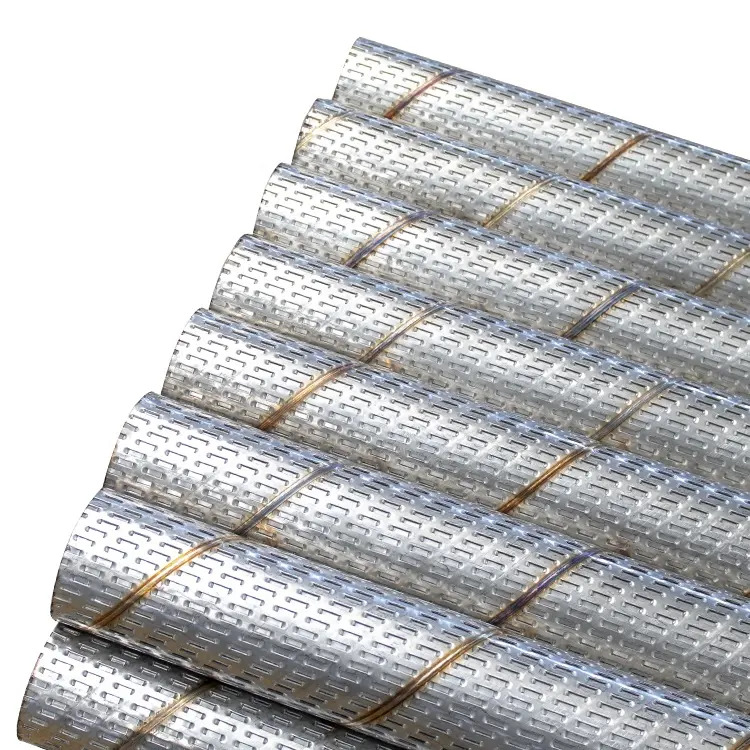
Schermata di controllo della sabbia del ponte
Descrizione del prodotto:
- Spessore della parete: 3.5 mm a 7 mm;
- Area aperta: fino a 12%;
- larghezza della cava: 1 mm a 4 mm;
- Diametro esterno: 6 5/8", 7", 8", 9 5/8", 10 3/4" & 12".
Funzione & Vantaggio:
- Alta resistenza meccanica;
- Prezzo economico;
- Facilità di installazione;
- Apertura della fessura di precisione;
- Ampio spazio all'aperto.
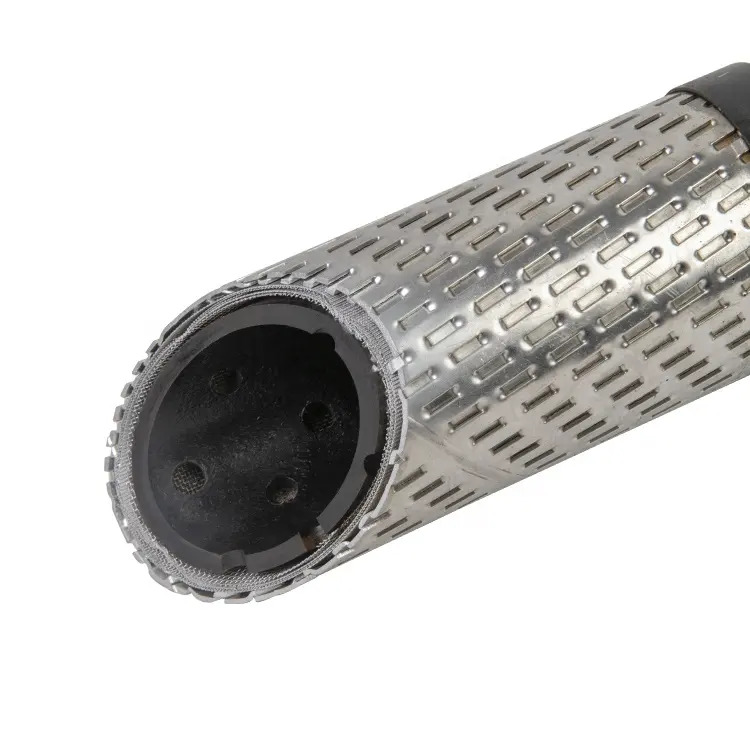
Lo schermo per slot a ponte viene solitamente installato in pozzi di buste di ghiaia. I suoi principali vantaggi sono un'area di apertura ragionevolmente elevata e perdite di carico per attrito minime e un costo relativamente basso. Uno svantaggio importante è la bassa resistenza al collasso dovuta al gran numero di fessure orientate verticalmente. Il processo di produzione è limitato rispetto allo spessore della parete e .250 pollici è il massimo generalmente disponibile. Poiché il controllo della ghiaia è più difficile con qualsiasi apertura verticale rispetto a un'apertura orizzontale, dovrebbe essere selezionata una dimensione di apertura più piccola rispetto al materiale dell'imballaggio.
